One Dozen Solo Etudes with Attitude
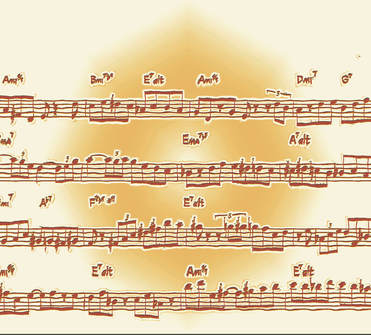
As I've expressed previously in these pages, creating lines for oneself over the changes of a given tune is a great way to slow down, examine, practice and internalize its potential melodic, harmonic and rhythmic aspects, as well as to create personalized material for use in actual improvisational performance.
The dozen etudes selected here are presented in Concert key, Bb and Eb versions and were created with specific accompanying Aebersold playalong tracks in mind - matching style, key and tempo.
Here's the full list of etudes, with its corresponding volume on which its compatible Aebersold playalong track can be found:
"Doxy" Vol. 8 "Sonny Rollins "Manteca" Vol. 64 "Salsa Latin Jazz"
"Love for Sale" Vol. 112 "Cole Porter"
"Wave" Vol. 98 "Antonio Carlos Jobim – Bossa Nova
"Satellite" Vol. 75 "Countdown to Giant Steps"
"Body and Soul" Vol. 41 "Body and Soul"
"All of Me" Vol. 95 "500 Miles High"
"Inner Urge" Vol. 108 "Joe Henderson"
"Night & Day" Vol. 51 "Night & Day"
"Softly as in a Morning Sunrise" Vol. 40 "'Round Midnight"
"Misty" Vol. 41 "Body and Soul"
"Moment's Notice" Vol. 38 "Blue Note"
Each of the live recorded playalong rhythm tracks, consist of piano, bass & drums.
As mentioned previously, it's not necessary to have a playalong to study the material in "Jazzitudes", but If you don't already have these on the above list and want them, they can be purchased individually and inexpensively as single file mp3 downloads from jazzbooks.com. Use the advanced search to locate the particular song / sound file you're looking for.
With the plethora of digital apps that provide programmable accompaniment for any song or harmonic progression, the Aebersold collection of actual recorded human rhythm sections - the first to do so back in the 1970's - are still the best, in my not-so-humble opinion.
Since the Aebersold playalongs are audio-mixed with the bass and piano hard panned to opposite sides of the stereo spectrum and isolated (with the drums floating in the middle), I often like to mute the piano entirely and "stroll" with just bass and drums.
Not only does this make one more aware of the bass lines, it also frees one up from the set piano voicings and allows one to experiment more freely with different intervallic and harmonic techniques (fourths, Coltrane Cycle, different scale systems, etc.).
Using a free app such as Audacity will allow you to change the tempo of any audio file (mp3, WAV, etc.) for practicing or transcribing purposes, without changing the pitch. Transcribe! does the same thing for a price. Both are invaluable tools!
Below is a Bb example of the first chorus of my own tenor solo on Joe Henderson's classic "Inner Urge" which I recorded as a demo using the rhythm track from Vol. 108. In the book, I've included a transcription of the first two choruses, as it works well as an etude; plus - since I already have a recording of it - I could use it here as an example.
Above all, I believe these etudes are a fun, challenging and musical way to study, practice and get intimate with these tunes.
Hopefully, you will even be inspired to create your own as well.
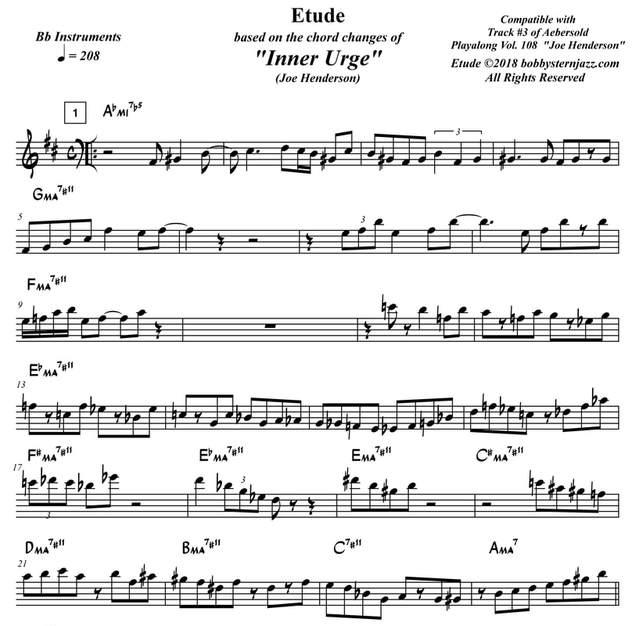
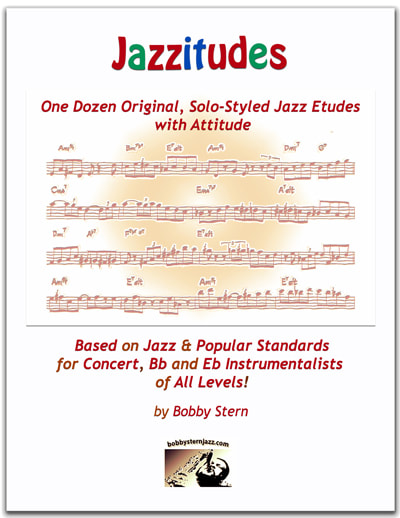
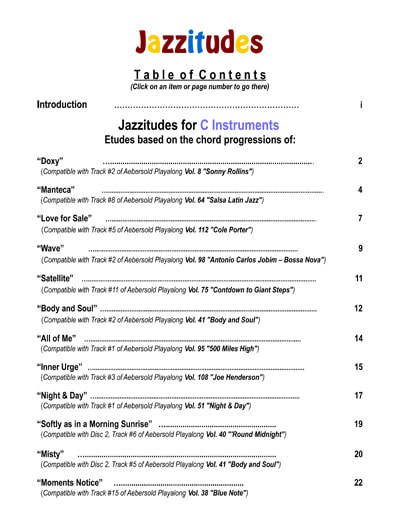
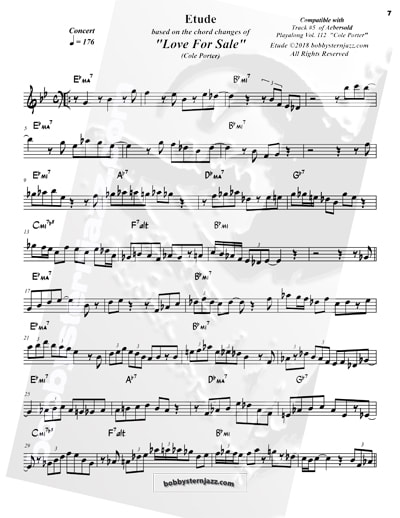
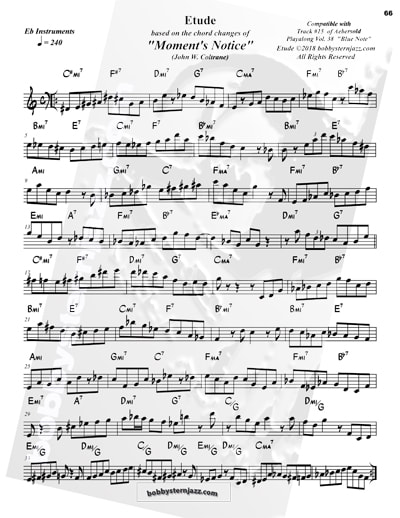

 RSS Feed
RSS Feed









